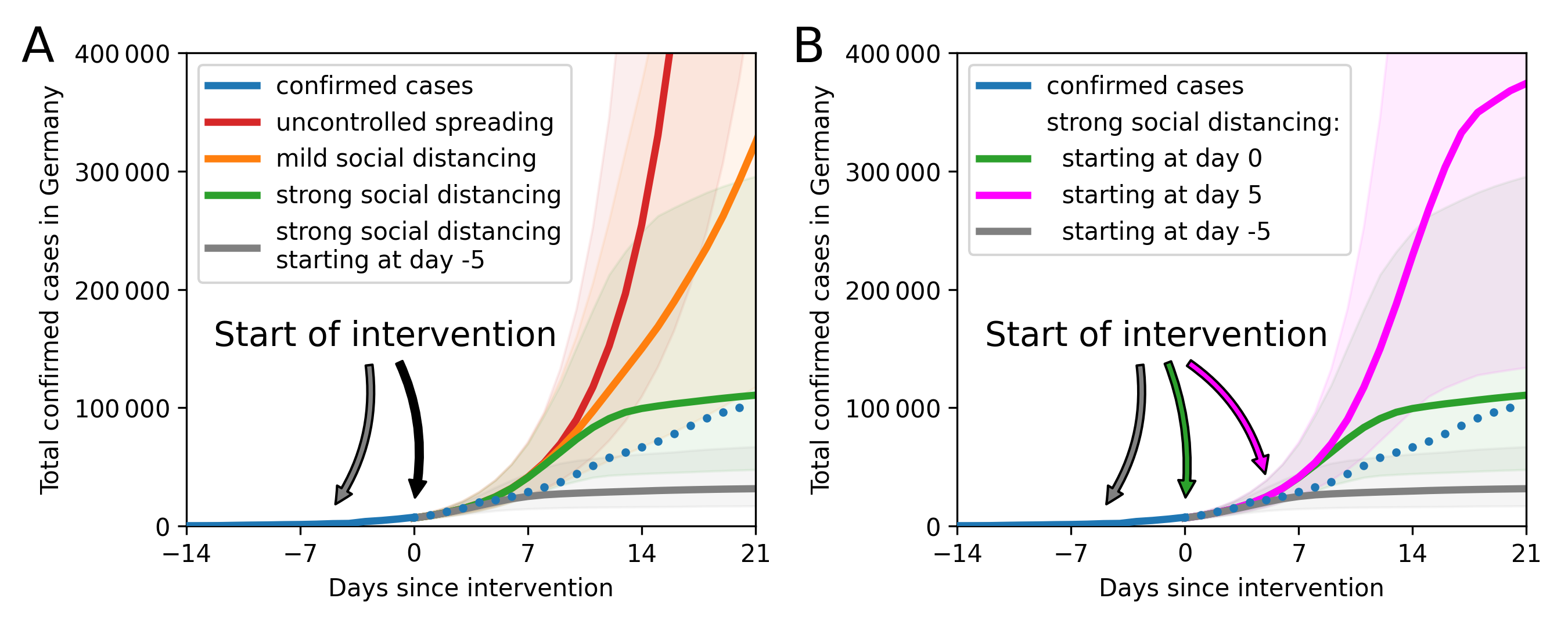Possible Future Scenarios
Last Update:
How will COVID-19 spread in the coming days? Does it matter if we change our behaviour? And how long will all this take?
We developed a SIR model to sketch three different future scenarios (Figure 1), starting from the 16th of March 2020:
(I) If we continue as before, the growth rate remains at around 30% per day (red curve).
(II) If we partially restrict our contacts (orange curve) and only meet about half as many people, then the exponential growth will slow down and we gain some time.
(III) If we introduce much stricter measures for all people, then the curve may flatten out (green) - only few new cases occur.
Model details and the Python code are available on our github repository.
From the evolution of the total number of cases, it can be seen very clearly that a change in behaviour will only be visible in 7-10 days. Only on day 7 the curves start to show a difference from each other. This is because many people are already infected, but they have not yet been identified and tested. Due to this uncertainty, it is especially important to reduce the number of contacts for everyone. If we wait another 5 days, the number of cases will increase threefold, even in the best scenario (Fig. 1B)! This also means three times as many serious cases that require medical attention, hospitals, intensive care and respiratory equipment. This would significantly increase the number of deaths! To save these lives, we must act now.
Our model is based on standard susceptible-infected-recovered (SIR) assumptions: every infected person “I” can infect a susceptible person “S” with rate λ. The infected persons “I” recover (“R”) with rate μ.We estimate these parameters from the past case numbers using Bayesian Markov-Chain Monte-Carlo importance sampling. Of course, one could think of extending to model, e.g. to investigate how local segregation, or even stricter isolation of people at risk and specific age groups impacts the future disease spread. Yet, the standard SIR model provides very valuable forecasts for the next month.
In general, to reduce the number of newly infected people, the goal is that every infected person infects less than one new person. Only then, the spread will diminish.
To save lives, and to reduce the number of people in need of intensive care, it is of particular importance to avoid that people with high risk of complications get infected.

Figures: MPRG Priesemann, Max Planck Institute for Dynamics and Self-Organization
Published in: Science

